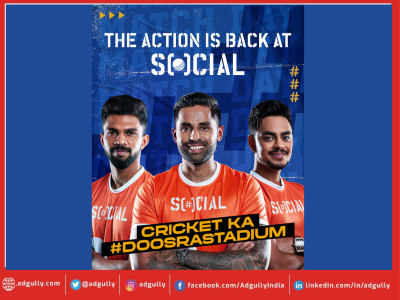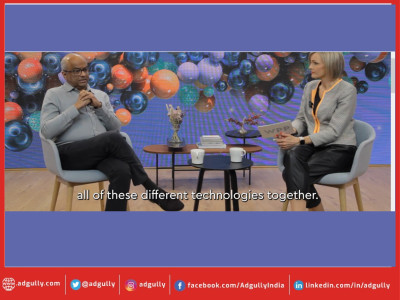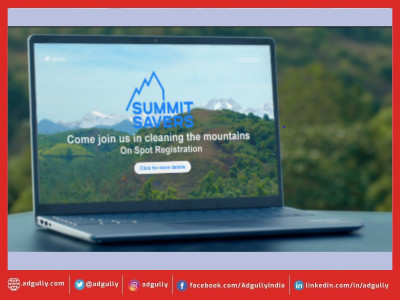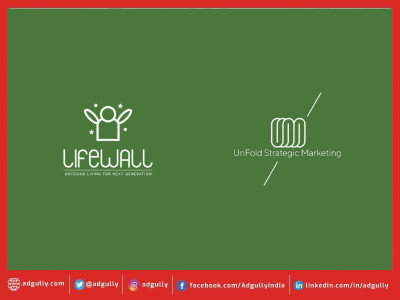Ag Voice | Building Social Business and Brands
Early in Mad Men’s second season, Harry Crane, a junior employee at the agency, has just been tapped to build a television department from the ground up. Nobody’s an expert in the space – least of all Crane, who continually crosses clients and coworkers as he goes. He lands an ill-timed product placement for Maytag that triggers a frenzied spate of Cold War-era crisis management. Eventually Harry realizes that growing a department in the space of emerging media can sometimes mean doing the job of multiple people – including the heavy lifting, client interfacing and budget management.
Harry Crane’s fictional story from the 1960s resonates with present-day social media professionals. Social media is too often characterized by poor campaign planning, lack of staff support, and needless exercises in crisis management (can we all just agree that brands should never post anything related to national tragedies?). Growing a strong social brand is not for the weak of heart. Or mind. But making your brand a social one can make your organization into a more nimble and customer-centric one – if you can overcome six key challenges facing social today.
Challenge 1:
An Emerging Professional Skill Set:
In the first decade of social, platforms mesmerized brands. Most platforms were small, nimble and fun. You could get in with a low budget, and the potential opportunities were massive. The barrier of entry was so low that brands jumped right in. Facebook pages were created and abandoned weeks or months later by people lacking much experience. One CPG firm knew that it wanted to use social media to highlight the breadth of their product offering. Its solution was to create a unique Facebook page for each product, multiplied across different markets. This multipage, multiproduct and multimarket approach made it almost impossible for the firm to coordinate and sustain a cohesive global campaign around a single product, much less the brand itself. It’s no surprise then, that some of the campaigns, agencies, companies, and individuals failed – some spectacularly. Many clients got burned with unmet promises, unrealistic budgets and schedules, and overall lack of expertise. Some are still haunted today.
What we know today: Thankfully, we now have a deeper base of experience. We also tend to interface more closely with senior leaders throughout the organization – and they are increasingly sophisticated in their understanding of the space, including investment and return on social engagement. Still, it’s a young domain, and brands continue to hire junior talent to drive their social strategies. According to a 2013 study1 of social media professionals, 47 percent of respondents said that their preferred level of experience for social practitioners is between one and three years – and 25 percent use interns.
Challenge 2
Lack of Internal Governance and Collaboration:
Organizational governance is a significant obstacle for social brands. In some instances, social media is owned and executed by multiple departments, from Marketing and PR to HR or new product development. According to a 2013 study, only 27 percent1 of businesses have a dedicated social media team in place. Shared ownership, while often unavoidable, can result in diffusion of responsibility in times of crisis, and complicates investment planning. If no one really owns social, then social initiatives don’t tend to succeed or evolve. In other cases, social lives in a single department, in or outside of the marketing discipline. The discipline owner tends to amplify the power of social for that discipline, forsaking the rest. For example, a financial services firm’s social media strategy might be governed entirely by the IT team, rather than the marketing or branding team. In other cases, a marketing team might own social, but other departments like customer service and legal haven’t been engaged or educated in how social can drive the unique business objectives they care about.
What we know today: Creating a social leadership committee can be immensely helpful in fostering organizational alignment. By identifying a key stakeholder from each major domain within an organization and meeting frequently to discuss their contribution to the social customer experience, our clients have successfully mitigated the disjoined approach and investment in social media that is sometimes present in highly fragmented organizations.
Challenge 3
A Focus on Channels and Not Experiences:
At its best, social media is a behavior or cultural value activated through a set of channels or tactics. It’s more than the sum of Facebook, Twitter and Instagram, but rather the great customer experiences that can come from those platforms working together cohesively and creatively. One of the most exciting aspects about working in social media is the constant influx of new platforms and tools. It’s essential to evaluate the role and objective of a new platform – and how it will work cohesively within your social platform mix – before jumping in. Brands should not be afraid to experiment, though. In 2013, Taco Bell added SnapChat into its social mix, using the platform to shape a narrative around a trip to Taco Bell through a series of photos and videos. Though SnapChat has a reputation for risqué content, it also boasts 350 million photos shared per day and is hugely popular with the 13 to 23 age group. For Taco Bell, the potential risks associated with SnapChat were far outweighed by the opportunity to connect with a key target demographic whose attention is notoriously difficult to hold. Moreover, Taco Bell has infused its brand identity with risk and excitement, as well as friendship and shared experience. These attributes are perfectly in line with the functionality of SnapChat.
What we know today: It’s easy to get excited about a new channel and all of the potential it holds for our business. But when considering expanding a brand social presence onto a new channel, it’s essential to understand how the channel in question will add value to the existing or desired social customer experience. Focus on the underlying behaviors that a channel can help drive; the way channels connect to a broader ecosystem that supports the customer journey; and how they fit together to drive sales from an attribution standpoint. As for defining what that social experience might look like, we often find that a discussion of brand values or attributes can be a great jumping-off point for developing guardrails around social content, voice and messaging for a brand.
Challenge 4
Untested Crisis Management Plans:
Many of our clients today are investing in robust crisis management programs for social media. In recent years, we’ve seen brand equity and perception seriously damaged by a story spread through social channels. In the mid-2000s, it was often an organization’s employees that were the root of the story – perhaps because younger employees were more likely to be using (and misbehaving in) social. In 2009, two Domino’s Pizza employees at the company’s Conover, N.C., franchise independently posted a video of themselves doing certain unseemly things to a pie before it went out for delivery. The video went viral, and Domino’s found itself embroiled in a social crisis. Even worse, Domino’s didn’t even have a brand presence in social media at the time, so creating a communications strategy for the space was even more of a challenge. Luckily, Domino’s was able to react quickly, leveraging its loyal fanbase to advocate on behalf of the brand and releasing an official response via YouTube. By addressing the issue head-on in the very medium from which the issue arose (YouTube), Domino’s was able to salvage its reputation and quickly launched a very successful social media strategy.
What we know today: These early examples of social missteps during the first decade of 2000 brought the potential risks of social media to the forefront of our industry’s conversation about the emerging medium of social. Just as Harry Crane’s Maytag sponsorship resulted in a doubling of his workload to rule out any future accidents, community managers and social managers began to develop more robust processes for social. It’s interesting to note that the Domino’s experience with social media crisis prompted the brand to get more involved in the space, rather than shy away from social as a result. The brand recognized that it was subject to the tides of social conversation and crisis whether or not it was active in the space – but that managing a social crisis was made much easier with the aid of an active presence and passionate community base. Once Domino’s had invested in developing a process around crisis management after the incident, it was able to draw upon that resource over and over again to resolve future social issues – including a well-publicized 2013 community management gaffe that the brand handled with wit and panache.
Challenge 5
Disconnect between Social and Core:
Business Operations
Social media can also be an invaluable tool for identifying and solving problems in times of crisis. In the weeks after Hurricane Ike created $25 billion in storm damage across the United States in 2008, one large insurance company was struggling to work through a common post-storm challenge: making contact with customers in affected areas to insure their safety and provide them with an opportunity to get information and help. The widespread impact of the storm also made it difficult to prioritize those efforts. The insurance company had invested recently in a holistic social media monitoring program, (at the time, Twitter had 4M users, Blogger was the #1 social media site, followed by Facebook (200M worldwide users) and MySpace) receiving weekly and monthly reports on social brand health, conversation volume and themes, sentiment and key influencers. Upon receiving its first post-storm social monitoring report, the organization discovered that hundreds of affected customers were tweeting, blogging and posting about the ways the storm had affected their lives, their families, and their property. Social became an avenue for communicating with impacted customers who couldn’t otherwise make contact with their insurance agent.
What we know now: Social media monitoring in 2014 doesn’t stop at measuring campaign performance. It’s also a key source of data for proactively understanding and communicating with customers. The wealth of social data around consumer preference, perception, behavior, and experience holds a vast opportunity for businesses to derive value from social.
Challenge 6
Short-Sighted Social Strategy:
In the early years, few brands planned for infrastructure, people, budgets and long-term strategic roadmaps. Let us return to the example of Harry Crane and Roger Sterling, particularly their motivations for creating the new Sterling-Cooper television department. As Harry says, the agency needs a TV department because “all the other agencies have one.” This catch-up mentality was also the driver of many an early social media presence, which influenced some C-level executives to impulsively ask their inexperienced teenage children or junior employees to open a social media presence. It’s easy to build a presence in social – inexpensive, quick, dirty, and so different from traditional media. But social is permanent. It’s a dialogue, not a message. It’s dynamic, not static. It deserves planning and thought. Social business professionals need to make the social brand sustainable for years after the initial engagement or campaign.
What we know today: As our collective social sophistication increases, and as brands expand their presence in the ecosystem, business objectives become the crux of the conversation around investment. Social is the new way that businesses operate. Social affects the way businesses identify and respond to customer issues. Social affects the way customers find and share information about a brand’s product, content or experience. It affects the way companies recruit new employees and retain and communicate with current ones. It allows brands to share thought leadership with a broad industry peer set and conduct research and development for new or existing products. We must broaden our thinking around defining and driving toward key business objectives to acknowledge the role of social as it enacts subtle changes in every aspect of our lives today.
Where Do We Go from Here?
Business objectives should be at the heart of social business. A strong social brand can positively affect every phase of the customer journey, in both the long and short term. By aligning to a set of defined social business objectives, and measuring performance by key performance indicators, brands can understand their return on investment. We’ve learned that social media is increasingly a key factor in driving consumer loyalty in an age when brand loyalty is almost mythological. We’ve also implemented a holistic approach to developing, executing and measuring social strategy for our clients that extends beyond domain or business function: Social media is a philosophy, a mentality, and a behavior that can be applied to most aspects of a social business. Social demands brands be adaptive, flexible, imaginative, and future-focused. If we can retain those qualities in the coming decades – even as new forms of media emerge and our industry changes and grows – we shouldn’t ever have to worry about irrelevancy.
By Annicka Campbell-Dollaghan, Global Social Insights Operational Lead, SapientNitro Chicago and Melissa Read, PhD, Global Social Insights Head, SapientNitro Atlanta


















Share
Facebook
YouTube
Tweet
Twitter
LinkedIn